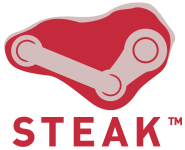Introversion talk Steam
Gamesindustry.biz have posted an interview with Mark Morris, director of Introversion Software, developers of Darwinia and Defcon, which spends a significant portion of its time covering the indie developers’ relationship with Steam, and their thoughts on digital distribution in general.
Summary of points
- Introversion contacted Valve on a whim, and found that working with them is “much nicer” than with publishers thanks to Steam’s direct nature. More
We were prompted to [distribute on Steam] when Alison [Beasley, from Introversion’s PR firm Lincoln Beasley] said, just after the Edinburgh festival, “You should talk to Valve about going on to Steam” – so we did. TJ got in contact with Scott [Lynch] over there and showed them the product, asked if they were interested…they were, and they took it, and it’s had pretty good initial sales, which has raised our hopes. It’s gone down a bit since then, but it’s prompted us to do digital content on all sorts of things.
It’s much nicer to work with Valve than it is to work with some of the big publishers, where you’re so far away from your customers – with Valve, it’s you, Valve and your customers, which is great.
- Although they have no fixed contract, Introversion are confident that their future games, including Defcon, will be made available on Steam in the same manner as Darwinia. More
We don’t really want to sign deals and say, “right, the next four titles are going to go out over Steam,” because we don’t know what’s going to happen. At the moment the relationship with Steam is really good, and I’d love to have just put title after title after title out on Steam. We’re talking with them about Defcon, and I’m confident that we’re going to get Defcon going over Steam as well.
- Introversion are arranging an Xbox Live Arcade release for Darwinia. More
We’ve got Steam on the PC retail, hopefully Live Arcade – we’re talking to Microsoft, so hopefully we can work that out.
- Valve don’t seem too sure what their strategy is for the growth of the Steam library. Some staff will tell you that there is a plan that “will become clearer over the next year or so”; others that anything they consider worthy will be put up. More
I was having a chat with their new products guy, the guy who’s responsible for what goes onto Steam, and there are differences in opinion within the company. Some people will tell you, “we’re going to put every game on Steam – all these things are going to be on there”; other people will say “no, we’ve got a very clear idea and a strategy of the sorts of games we want to have on Steam, and that strategy will become clearer over the next year or so.”
I don’t know whether it’s the case that they do have this big master-plan, and Darwinia fits into it, or whether they’re just actively looking for content, and there’s not a huge amount of content out there at the moment because people are already signed up with exclusive deals with box copy publishers and all the rest of it. So, I don’t know, but it’s an interesting question alright.
Valve’s library strategy
Morris’ fourth quote is particularly intriguing. What exactly is Valve’s strategy? Edge magazine reported that Valve were “all but trawling the IGF booths with a shopping trolley” in their GDC 2006 write-up (thanks hahnchen), yet the volume of titles present today does not suggest a proactive search. All we know is that casual games are not accepted.
There are three key-frame approaches that can be taken for online library growth. The first is accepting absolutely anything that comes your way; Triton appears to be closest to this method. It takes advantage of the theoretical “infinite shelf-space” of digital distribution and increases your target demographic, but very much at the expense of your image. It isn’t the subtlest of options.





